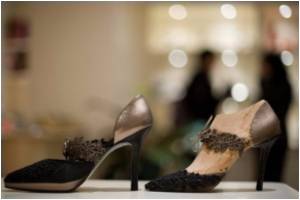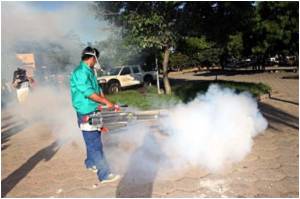A museum displaying the famed shoe collection of ex-first lady Imelda Marcos has reopened in the Philippines, heralding a fightback by its beleaguered shoe industry against a flood of cheap imports.

Footwear consultant Tessie Endriga said that Imelda Marcos failed to provide the Marikina shoe industry with much-needed infrastructure or financing when she was in power. But she did help in her own way.
"She did patronise local brands. If she liked a certain style, she would buy a dozen pairs," recalled Endriga, who has worked with the government's Bureau of Product Standards.
Marikina shoes were once famous, both locally and abroad, until low-priced footwear from countries like China and Vietnam flooded the industry over the years, said local business leader Jose Tayawa.
"You buy Marikina-made shoes and use them for five years. You buy Chinese shoes for one-fifth the price but you can only use them for a few months," said Tayawa, the head of the Marikina Chamber of Commerce and Industry.
Former shoe museum curator Dolly Borlongan conceded that most of Imelda Marcos's shoes were imported but added that there are many Marikina shoes among them, as well as displays on Marikina's shoe-making history.
Advertisement
The town has also built the world's largest shoes -- a pair of leather men's shoes, each as large as a van -- which are still on display at a Marikina mall.
Advertisement
But Marikina's shoe-makers -- and the shoe museum -- have suffered setbacks in recent years. Massive flooding from tropical storm Ketsana last year damaged the museum as well as many shoe-makers' facilities and inventory.
The storm and the foreign competition took their toll. From the mid-1990s peak of 3,000, only about 200 Marikina shoemaking factories remain, said Roger Py, director-general of the Philippine Footwear Federation.
But in late September, the museum reopened, just one of the moves that Marikina officials and businessmen hope will turn the footwear industry around, city administrator Victoriano Sabiniano said.
Tourists who visited the museum tended to look for a place to buy Marikina shoes, officials said, so the city is setting up a permanent shoe expo in a central area to sell its key product and spread the word about its quality.
"Step one is the local market. Once we fix that, we can go abroad," Sabiniano told AFP.
Quality was never the problem, asserted Endriga.
"We have come up with excellent shoes. The quality of craftsmanship in the Philippines can compete with Italy," she said.
However, she added: "I won't say the shoe industry is dying but it is missing out on a lot of opportunities."
Government figures show that Philippine footwear exports in 2009 dropped 19.5 percent over the previous year to 25.96 million dollars.
Exports hit their peak at 176.3 million dollars in 1994 but have fallen sharply over the years.
Many visiting foreign buyers are still impressed by the quality of Philippine footwear, said Merlinda Diaz, an officer in the government's Bureau of Export Trade Promotion.
"But then they ask for China-level prices and the deal falls through," Diaz recalled.
Smuggling compounds the problem, with huge volumes of foreign shoes being sold at prices no local company can compete with, said Py.
The solution is not to compete with the high-volume production of these countries, he said.
"We avoid meeting the competition head-on in the cheap footwear sector. We go for the middle and the high-end," said Py, who also heads Stefano Footwear, a major local manufacturer.
The local cobblers are now targeting smaller boutique stores in developed countries, where low prices are not the main attraction, he said.
The rising wages in China are also making Marikina shoes more competitive, Py added.
"China is becoming expensive, Vietnam is not that cheap either. We just have to go out and sell ourselves," he said.
Source-AFP









